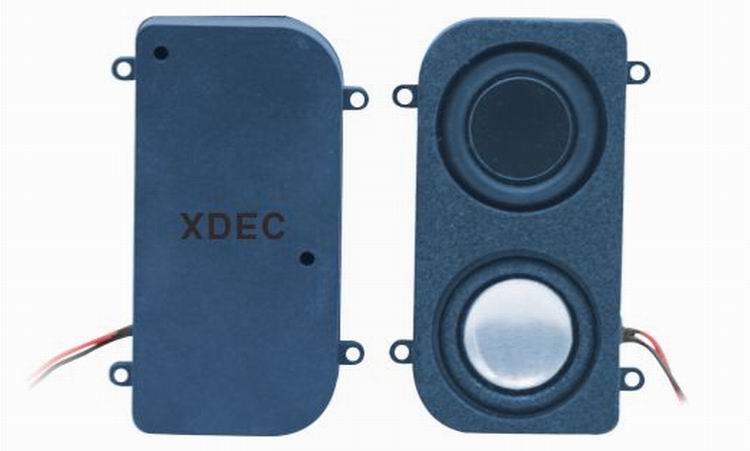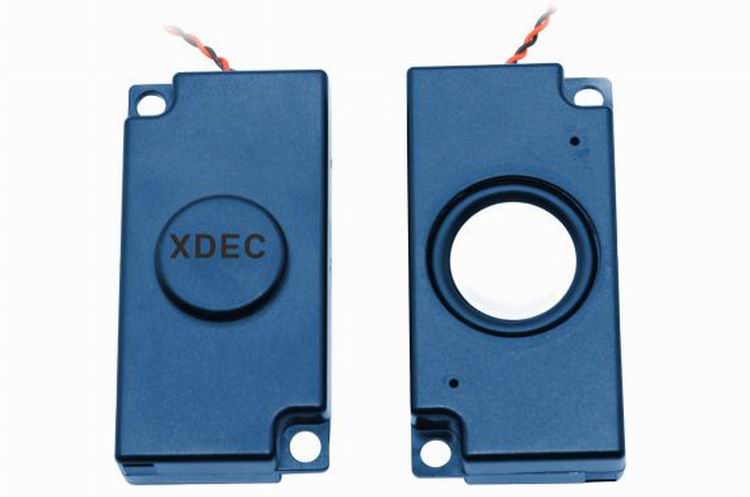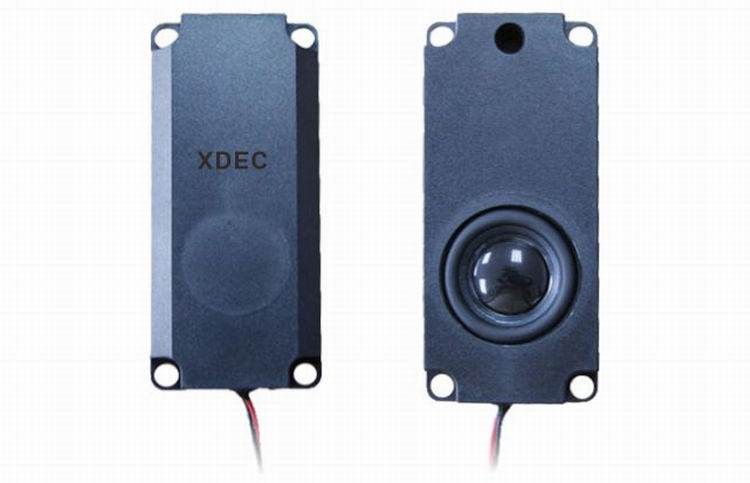Consumer electronics growth steady
According to IHS iSuppli's research report, global consumer electronics revenue in 2011 will reach $357.3 billion, which is only a 1.5% increase from 2010 and a growth rate 77% lower than the company's previous estimate of 6.4%. In 2011, the growth rate of consumer electronics revenue was relatively low, which was a significant slowdown compared to 2010. The market grew by 7.9% last year. The main factor that led to this year's decline in consumer electronics market forecast is the slowdown in the growth of LCD TVs. This sector accounts for nearly 30% of the total consumer electronics revenue. It is estimated that LCD TV revenue in 2011 will be US$104 billion, instead of the previous forecast. The 110 billion U.S. dollars.
According to DisplaySearch’s latest global TV shipment and forecast report, compared to 2010, the global LCD TV market will grow by only 8% to reach 260 million units in 2011. However, Chinese brands such as TCL, Skyworth, Konka, Haier, Changhong, and Hisense are expected to have growth rates of 20% to 30% in 2012, which means that the LCD TV market has clearly shifted from the developed country market to the developing country market.
However, Takubo Industry Research Institute estimates that sales of the three index consumer electronics products in China’s LCD TVs, mobile phones, and notebook PCs increased by 12%, 8.1%, and 17.8%, respectively, in 2012, but they were 13.5% higher than in 2011. The decline of 10.9% and 20.4% is even more difficult to compare with the high growth in 2010. This shows that the domestic market in China has become increasingly saturated, and the high growth rate is difficult to reproduce.
In the Chinese market, the market research company Yikang data shows that in the first three quarters of this year, the growth rate of retail sales in the color TV market was -0.1%, 4.9%, and 19.4%, respectively, and the market showed a slow rise in the slow opening, after the first half of the year. After the market continued to slump, the color TV market showed signs of gradual improvement in the third quarter.
According to the statistics of the China Electronics Industry Association, the total output of China's color TV industry is expected to reach 124 million units in 2011, an increase rate of 8.5%; color TV exports will reach 74.6 million units, an increase of 13% over 2010; domestic market shipments will reach 4200 Million, an increase of 6.3% over 2010.
The growth in sales of LCD TVs is mainly due to the popularity of smart TVs and 3D TVs. After five consecutive years of rapid development, the color TV market dominated by LCD TVs has gradually slowed down this year. According to GFK's national retail sales projections by market research agency, China's LCD TV retail sales reached 24.83 million units in the first three quarters of 2011, up only 6% year-on-year, while retail sales of 3D LCD TVs reached 1.7 million units. The chain increased by 121%.
AVC statistics also show that from January to October 2011, the sales of smart TVs were 2.45 million units, and smart TVs will increase in volume in the future. It is expected that the smart TV market will reach 11.9 million units in 2012. It is 27.74%. According to data from CCID Consulting, the average annual compound growth rate of China's smart TV production in the next three years is expected to reach 65.1%, which means that smart TV will soon become the protagonist of the global television market.
Zhong Yikang's data is more optimistic. It is expected that the total demand for smart TVs will surpass 3D TVs in 2012, reaching 18.75 million units, which is expected to reach 26.93 million units in 2013.
This year's mobile phone market achieved higher growth thanks to the popularity of smart phones. According to TPI, the global handset shipments in 2011 will reach 1.6 billion units, an annual growth rate of 11%. Among them, smart phone shipments will reach 450 million units, and the penetration rate will be 27.95%. It is expected that smartphone shipments will approach 600 million units in 2012, and the penetration rate will exceed 1/3. By 2015, half of the world's mobile phones are expected to be smart phones.
China’s smart phone is credited with selling thousands of smart phones. According to data from the GfK market survey, in October 2011, the sales of mobile phones with prices between 800 yuan and 1,500 yuan accounted for 52.3% of the overall smart phone market, and the total market sales volume of smart phones increased by 160% year-on-year, while the prices were The smartphones between 800 yuan and 1,500 yuan increased by 284% from the same period last year. Thousand yuan-class smart phones have greatly reduced the threshold for the use of smart phones, so that smart phones into the popular stage.
White power goodbye to rapid growth
The sales of white goods, including air conditioners, refrigerators, washing machines, and water heaters, have been trending upwards and lows this year. This is mainly due to the withdrawal of domestic policies and the slowdown in exports caused by debt crisis in Europe and America.
Xu Dongsheng, secretary-general of the China Household Electrical Appliances Association, said in an interview with a reporter from China Electronics News that the implementation of the home appliances to the countryside policy has enabled rural household appliances to reach the fast lane. After a sustained increase in the popularity rate for several years, this year’s rising trend In peace. At the same time, due to the impact of real estate policies, the growth of the urban appliance market is not satisfactory.
The reporter noted that in the first 11 months of this year, the nationwide sales of home appliances to the countryside were 96.35 million units, and the sales amounted to 245.6 billion yuan, a year-on-year increase of 43.6% and 63.7% respectively. As of November 2011, the country’s total sales of home appliances to rural areas totaled 210 million units, with sales of 487.4 billion yuan and subsidies of 55.6 billion yuan.
Xu Dongsheng said that in terms of exports, in the first 10 months of this year, China’s household electrical appliance exports continued to grow, but the rate of increase slowed month by month and fell sharply from the same period of last year. From January to October, export growth still mainly relied on the support of the air-conditioning industry. However, although the industry is facing tremendous pressure, the production and export of main products have generally maintained growth. This year, the home appliance industry will fully exceed its original level in various fields such as production, sales, and exports, reaching a new historical high. It is estimated that the industrial output value of the whole industry in 2011 is expected to exceed 1.13 trillion yuan, an increase of 17% over 2010, and the industrial sales value is 1.07 trillion yuan, an increase of 17%.
As far as the refrigerator is concerned, this year's domestic refrigerator market experienced rapid growth in 2009 and 2010, and the market growth rate was calm. From January to October 2011, the retail sales amounted to 783 million yuan, and the retail volume was 32.61 million units, up only 1.3% year-on-year. %, 2.4%. With the arrival of home appliances to the countryside, the rural market refrigerator capacity has been greatly improved, and the rural market is no longer able to return to the initial high growth levels of home appliances to the countryside. From January to October this year, the retail sales of the washing machine market reached 46.6 billion yuan, and the retail volume was 29.14 million, an increase of 9.1% and 6.6% year-on-year, and the growth momentum was relatively stable.
From the air-conditioning market, Sino-Iceon data show that the retail market growth rate in the cold market in 2011 was 23 percentage points lower than the 2010 cold year, and the market retail sales growth in the first three quarters was 17.7%, 9.2%, - 14.8%, the declining growth rate is very obvious, especially in the third quarter, the market growth rate narrowed by nearly 40 percentage points compared with the same period of last year, which means that the market's rigid demand is weakening.
Kitchen electrical products have a close relationship with the real estate market. Since 2011, due to the effects of comprehensive policies such as restricted purchase orders, credit control, and interest rate enhancement, the real estate market has continued to slump and the industry has shown a downward trend. According to the monitoring data of Zhongyi Kang, from January to September, the sales of range hoods and gas stoves fell by 4.10% and 2.80% year-on-year respectively; the retail volume and retail sales of water heaters increased slightly by 0.32% and 3.53% respectively year-on-year. Water heater retail sales of up to 28,300,000 units, retail sales of 38.4 billion yuan.
"Intelligence", "Core" and "Green" to guide industrial upgrading
This year, China’s consumer electronics industry has begun an era of intelligence. Smart TVs (cloud TVs) have gradually become hot products in the LCD TV market, and domestic brands have even gone ahead. According to CCID Consulting, from January to October 2011, the sales volume of smart TVs of Skyworth, Konka, Samsung, Hisense, Changhong, and TCL in the Chinese market was 16.7%, 16.5%, 14.7%, 14.3%, and 12.4%, respectively. 11.9%. In addition to Samsung, the other 5 domestic color TV manufacturers accounted for 71.8% of the market.
In the smart TV market, domestic color TV companies are actively developing autonomous operating systems. Changhong has launched the Xuanyuan system with independent intellectual property rights; Changhong, Hisense and TCL have jointly established the China Intelligent Multimedia Terminal Technology Alliance (Zhongzhi Meng), dedicated to The R&D of application stores and operating systems is intended to preempt the initiative by formulating their own standards and operating systems.
In addition, in the construction of LCD TV industry chain, China has taken a new step in 2011. BOE's 8.5-generation LCD panel production line with a total investment of 28.03 billion yuan and Huaxing Opto-electronics 8.5 generation investment with a total investment of 24.5 billion yuan will be officially put into production this year. It will realize the localization of mainstream LCD TV panels from 26 inches to 55 inches; Initiated preparation work with Sharp to invest in the 10-generation line project in Nanjing. It is estimated that the total investment of the project will be 36 billion yuan.
Experts pointed out that in 2012, with foreign companies such as Sharp, Panasonic and Sony adjusting their panel production strategies, they may find more OEMs in China, and China’s LCD panel production line will soon be deployed to the 10th generation line. By then, China may become a global player. The third largest panel production area has completely changed the situation in which the upstream panel is controlled by people.
In another new type of display industry, OLED, China is also making a big layout this year. BOE Investment reached US$3.4 billion. Shanghai Tianma, Rainbow, and other manufacturers also invested large sums of money. Two factories in Tianma and Caihong are expected to start mass production next year, while the third plant in Rainbow is expected to start production in 2014; another Chinese company, Visionix There may be a factory planned to start production in 2013. China's entry into the AMOLED industry may put pressure on other vendors currently in the market.
In the field of white electricity, domestic compressor companies represented by Gasibebel, Huangshi Dongbei, and Shanghai Highly are trying to make up for the lack of "core" in the Chinese home appliance industry. Among them, Huayi Bing's Gasibeira Refrigerator Compressor already has the power to compete positively with Embrak, the top international manufacturer. It is understood that Huayi Compression will produce 25 million high-efficiency refrigerator compressors in 2011, accounting for 25% of the global market share.
In addition, this year's energy saving and environmental protection technology has also led the transformation and upgrading of the home appliance industry. The application of frequency conversion technology to air conditioners, refrigerators, and washing machines on a scale means that China's home appliance industry has entered an era of frequency conversion. In fact, washing machines and air conditioners will focus on the development of frequency conversion products. During the “12th Five-Year Plan†period, the proportion of inverter air conditioners will be increased from less than 15% to 50%, and in 2020 will increase to 80%.
According to data from Yikang, from January to October 2011, the market share of variable frequency air conditioners was 47.4%, and the share of retail sales was as high as 54.6%, which was basically equal to that of fixed-frequency air conditioners; the share of retail sales of inverter washing machines reached 21.0. %, a year-on-year increase of over 35%.
Xu Dongsheng said in an interview with a reporter from China Electronics News that in the future, China’s refrigerator industry will focus on the development of air-cooled refrigerators and inverter refrigerators, and the proportion of over 250 liters of high-end products such as large-capacity, multi-door, and off-gauge will increase from the current 10%. To 30%; washing machine will focus on the development of drum washing machine, frequency conversion washing machine, the proportion of fully automatic models from the current 52% to 70%; air conditioning focus on the development of energy efficient air conditioning, inverter air conditioners, environmental protection refrigerant air conditioning, variable frequency air conditioners by the proportion of Less than 15% increase to 50%.
In addition, the just-announced "12th Five-Year Plan for the Development of China's Household Appliance Industry" also pointed out that during the "12th Five-Year Plan", research on the application of different heat source heat pump technologies, including CO, will be organized.
2 heat pump water heaters, suitable for heat pump compressors, heat exchangers and other core components, as well as low-temperature heat pump technology research and optimization design, energy conservation and environmental protection will be the future of home appliance industry trends.
Speaker boxes are a kind of speakers which have a box with a speaker unit inside and external wires, they are completed speaker modules. The boxes of the speakers are used for eliminating the acoustic short circuit, restraining the resonance, and widening the frequency response range of the speakers. Speaker Boxes have loud sound, wide frequency response range, rich bass and low distortion. These speakers are widely used for digital audio, car audio and robots-
Our speaker boxes include:
1) From power output, we have speakers boxes in 3W ~ 10W.
2) From working principle, we have sealed, vented and reflective speaker boxes.



FAQ
Q1. What
is the MOQ?
XDEC: 2000pcs for one model.
Q2. What is the delivery lead time?
XDEC: 20 days for normal orders, 15 days for urgent orders.
Q3. What are the payment methods?
XDEC: T/T, PayPal, Western Union, Money Gram.
Q4. Can you offer samples for testing?
XDEC: Yes, we offer free samples.
Q5. How soon can you send samples?
XDEC: We can send samples in 3-5 days.
Speaker Boxes
Speaker Box,Sound Box,Enclosed Speaker,Subwoofer Box
Shenzhen Xuanda Electronics Co., Ltd. , https://www.xdecspeaker.com